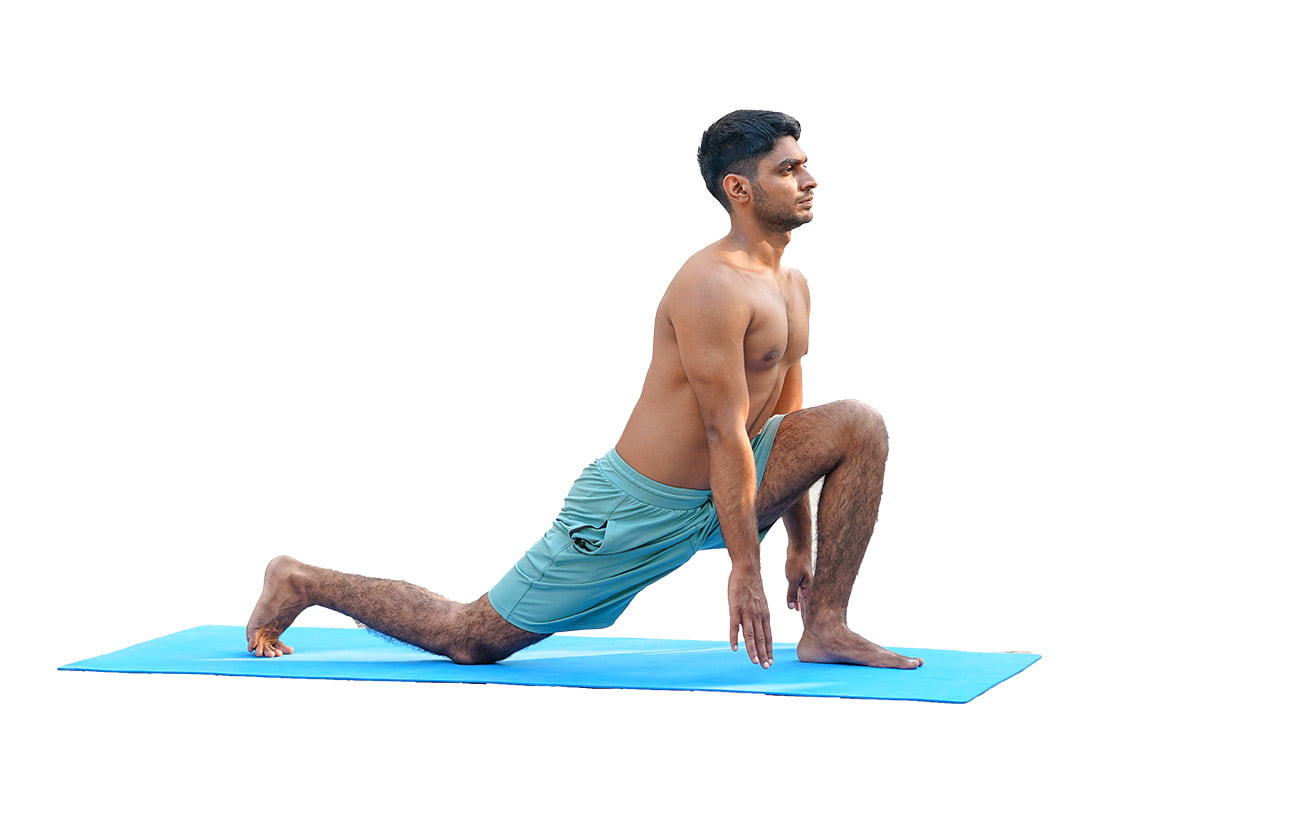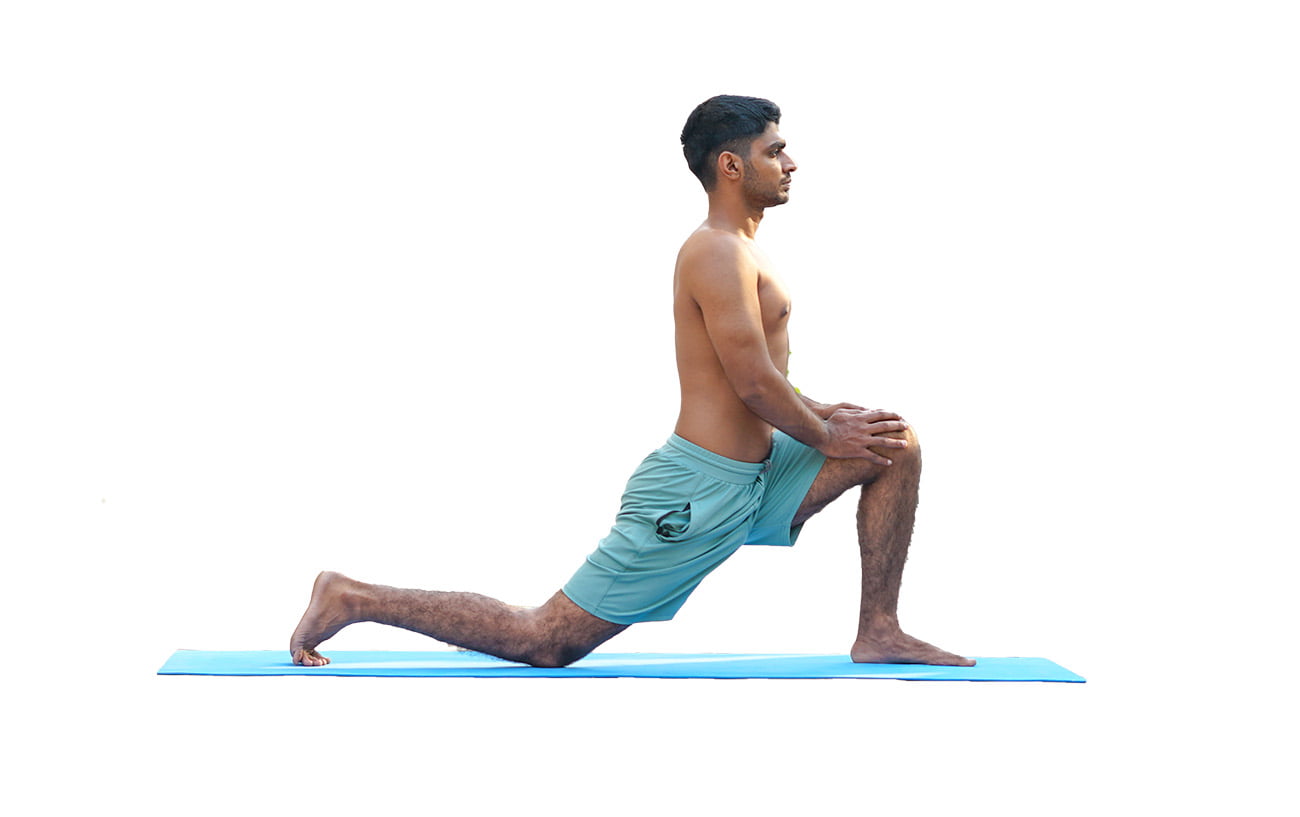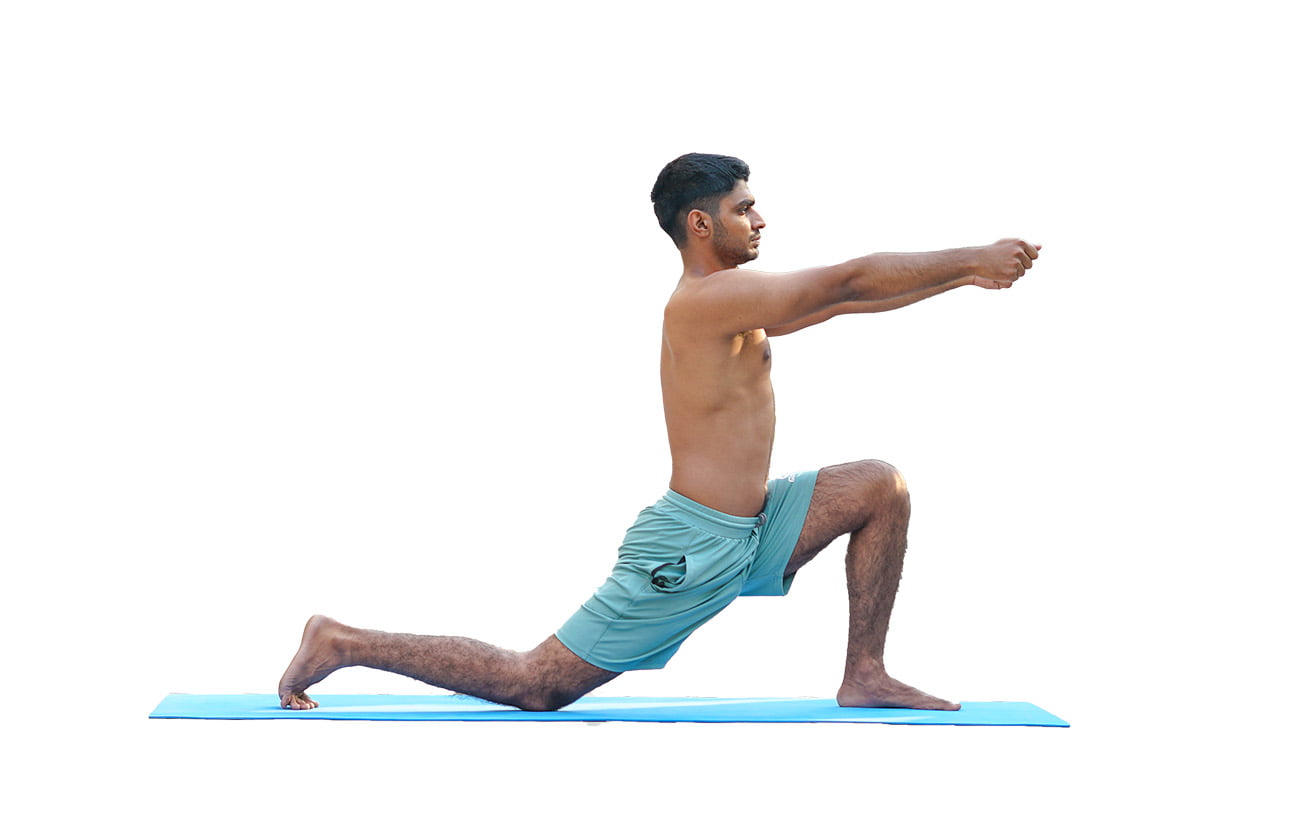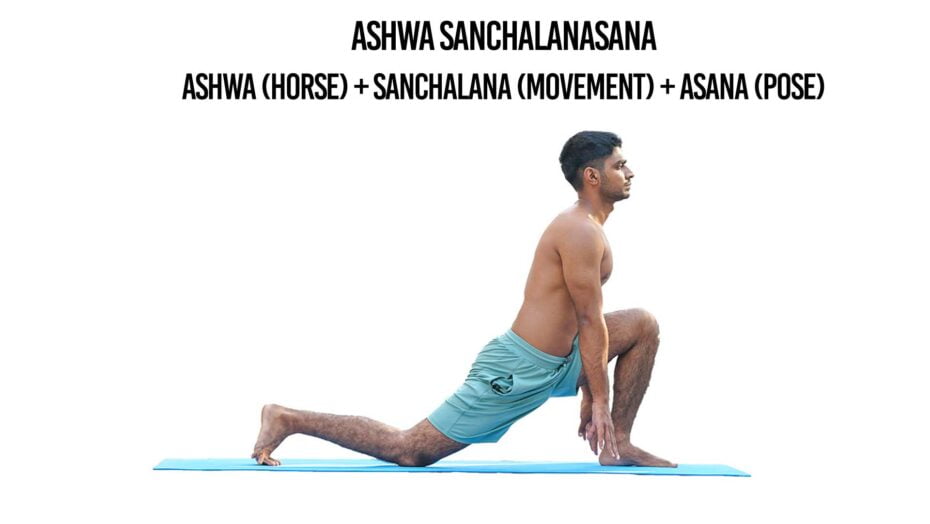Ashwa (Horse) + Sanchalana (Movement) + Asana (Pose)
Sanskrit: अश्व सञ्चालनासन
Difficulty Level- Beginner
Pose type: Stretching and Balancing
Also Known As: Equestrian Pose or Horse Movement Pose or Horse Riding Pose
Pronounced as: AA-SSVA-SAN-CHAL-AAS-ANNA
Table of Contents
Introduction Of Ashwa Sanchalanasana
Ashwa Sanchalanasana is derived from the Sanskrit terms ‘ashwa’ mean horse and ‘Sanchalana’ means movement and ‘asana’ means pose. Also Known as Equestrian Pose or Horse Movement Pose.
Ashwa Sanchalanasana is the fourth and ninth postures in the surya namaskar (Sun Salutation). This is an beginner level yoga posture focusing on our Hips, Knees, Hamstrings, Psoas and Lower back. It is believed to increase confidence, willpower and determination.
How To Do Ashwa Sanchalanasana: Step-By-Step
- Start from the Tadasana, or Samasthiti, in which you stand straight with your feet close. Your eyes looking straight.
- Bend forward while bending your legs and your palms on floor.
- Take your right leg back and put your knee on the floor.
- Looking forward, lift your torso, transferring your weight to your left leg. Your trunk should come forward while your back remains straight.
- If you feel yourself beginning to strain, bend forward so that your fingertips or palms touch the floor for additional support.
- Take 5 deep breaths.
- To release: Put your palms on floor and bring your right leg back and come back to Tadasana or Samasthiti.
Beginners Tips for Ashwa Sanchalanasana

- Using Palm For Balancing – Beginners find it difficult to balance in this pose so they can place there palm instead of just fingers for full support and balancing.
- Enter from various positions – You can also enter ashwa sanchalanasana from vajrasana, the thunderbolt pose, or adho mukha svanasana, also known as the downward-facing dog.
- Focus on the chakra – While doing the pose, keep your concentration on the third eye, or ajna chakra. It is the core of awareness, perception, and intuition. You can improve your concentration by focusing on the ajna chakra.
- Chant a mantra – This pose is part of Surya Namaskar, and while performing it as the fourth pose of Surya Namaskar, chant “Om BhanaveNamah,” which means Salutation to the one that shines. While performing the 9th pose of Surya Namaskar, chant the mantra “Om AdityayaNamah,” which means Salutation to the son of Aditi.
- For comfort and to reduce pressure on the knee joints, beginners can place a blanket under the knee.
Benefits Of Ashwa Sanchalanasana
- It is important to raise the chest slightly while performing Ashwa Sanchalanasana by taking the shoulders behind. The shoulders remain broad, and the collar bones remain open. Throwing the chest gently helps in the most efficient use of the diaphragm. As a result, breathing is full, and the lungs have an opportunity to expand their capacity.
- This pose increases spinal flexibility. The upper body is supported by leaning on the folded leg when the arms are aligned with palms on the mat at a shoulder-width distance.
- Ashwa Sanchalanasana helps to stretch and lengthen the lower abdomen, hips, psoas, groyne, pelvis, quadriceps, hamstrings, knee, ankle, and toes. Stretching these muscles, combined with hip opening, strengthens the entire lower body, providing excellent support for the upper body.
- The upper, middle, and lower back muscles are relaxed, allowing energy to flow. The hip opening also helps in the release of pelvic stiffness, which reduces stress in the lower back and hips.
- Yoga instructors believe that ashwa sanchalanasana stimulates the anahata, manipura, and svadisthana chakras, promoting confidence, determination, and willpower.
- Ashwa Sanchalanasana stretches the psoas, hamstrings, and quadriceps, making it ideal for runners, athletes, and people in sports.
- It helps in Engaging deep core muscles and improving balance and stability.
Variations Of Ashwa Sanchalanasana
1. Ashwa Sanchalanasana With Hand Support

Step To Follow:
- Start from the Tadasana, or Samasthiti, in which you stand straight with your feet close. Your eyes looking straight.
- Bend forward while bending your legs and your palms on floor.
- Take your right leg back and put your knee on the floor.
- Looking forward, lift your torso, transferring your weight to your left leg. Your trunk should come forward while your back remains straight.
- Place your hand on your left leg for support and balance.
- Take 5 deep breaths.
- To release: Put your palms on floor and bring your right leg back and come back to Tadasana or Samasthiti.
2. Ashwa Sanchalanasana With Hand Straight

Step To Follow:
- Start from the Tadasana, or Samasthiti, in which you stand straight with your feet close. Your eyes looking straight.
- Bend forward while bending your legs and your palms on floor.
- Take your right leg back and put your knee on the floor.
- Looking forward, lift your torso, transferring your weight to your left leg. Your trunk should come forward while your back remains straight.
- Place your hand on your left leg and make them straight vertical to the floor.
- Take 5 deep breaths.
- To release: Put your palms on floor and bring your right leg back and come back to Tadasana or Samasthiti.
Contraindications Of Ashwa Sanchalanasana
- Due to the abdominal pressure, pregnant women should avoid this pose.
- Avoid this pose if you have recent or chronic knee, shoulder, neck or back injury or inflammation.
Frequently Asked Questions (FAQs)
Define Ashwa Sanchalanasana?
Ashwa Sanchalanasana is derived from the Sanskrit terms ‘ashwa’ mean horse and ‘Sanchalana’ means movement and ‘asana’ means pose. Also Known as Equestrian Pose or Horse Movement Pose. Ashwa Sanchalanasana is the fourth and ninth postures in the surya namaskar (Sun Salutation).
Can we practice Ashwa Sanchalanasana daily?
Yes. If you practice Surya Namaskar at daily basis Ashwa Sanchalanasana comes at fourth and ninth stage while the sequence of the surya namaskar.
What are the health benefits Ashwa Sanchalanasana?
Ashwa Sanchalanasana helps to stretch and lengthen the lower abdomen, hips, psoas, groyne, pelvis, quadriceps, hamstrings, knee, ankle, and toes. It stimulates the anahata, manipura, and svadisthana chakras, promoting confidence, determination, and willpower.

